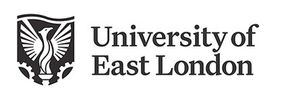Architectural Design Technology (Accredited by CIAT) BSc (Hons)

Architectural Design Technology is an interdisciplinary course that blends architecture with building engineering, building technology and construction management. Our team of architects, architectural technologists, and engineers will equip you with all the skills and knowledge you need for a rewarding career in this growing field. You will benefit from the contribution of architects and professionals from world-renown practices such as Foster and Partners, Zaha Hadid Architects, Make Architects, SOM, Rogers Stirk Harbour, ARUP, and Atkins.
The course has a strong grounding in design projects and is particularly recognisable by its ‘hands-on’ approach to architectural design. There is a strong focus on technical studies as well as computer software for Computer Aided Drawing (AutoCAD, Revit, BIM, Adobe Illustrator, Rhino), and building design and energy performance simulations (Integrated Environmental Solutions (IES), and Design Builder). We have world class laboratories and workshops including digital and robotic manufacture (laser cutters, 3D printers, robotic arm).
The programme can be studied in either full-time (3 years or 4 years if you choose to do a placement year) or part-time mode (6 years). Apprenticeship routes have also been introduced in 16/17, in which employers within the construction sector have approached the University to offer Construction Design Management as an apprenticeship route on a part-time basis.
Średnia ze wszystkich przedmiotów z matury: 40 % (z uwzględnieniem 2 przedmiotów na poziomie rozszerzonym, jeden przedmiot na poziomie podstawowym powinien być zdany na co najmniej 60 %).*
- Świadectwo ukończenia drugiej klasy (liceum) lub trzeciej klasy (technikum) – załącz ten dokument jeśli wciąż się uczysz i dlatego nie masz jeszcze świadectwa ukończenia szkoły średniej. Nie musisz załączać tłumaczenia tego dokumentu.
- Świadectwo dojrzałości oraz świadectwo ukończenia szkoły średniej – w przypadku ukończenia szkoły średniej wystarczy, że do formularza aplikacyjnego załączysz świadectwo dojrzałości (maturalne) wraz ze świadectwem ukończenia liceum (bądź technikum) - do obu tych dokumentów potrzebne jest też tłumaczenie przysięgłe.
*Uwaga: Wymagania rekrutacyjne mogą się zmieniać i różnić się zależnie od kierunku na który się aplikuje.
Spełnienie wymagań w zakresie języka angielskiego można udokumentować w następujący sposób:
- IELTS – 6.0 lub
- TOEFL - 80
- Matura ustna z języka angielskiego na poziomie 70 % i rozszerzona pisemna na poziomie 70 % może być wystarczająca, aby spełnić wymagania uczelni.
*Uwaga: Wymagania językowe mogą się zmieniać i różnić się zależnie od kierunku na który się aplikuje.
By completing this course successfully, you are eligible to apply and receive an Associate member status of the Chartered Institute of Architectural Technologists (ACIAT). With appropriate work experience, you can then progress to become a chartered member of the CIAT (MCIAT) and set up your own practice.
With a degree in architectural design technology, you’ll be perfectly placed to provide the crucial link between architects and other professionals and managers in the construction industry. You will apply your expertise in building science and technology to architectural and construction projects. Because of your highly specialist skills, you’ll be involved in managing the design process and using your technical knowledge to come up with innovative solutions to problems.
As an architectural technologist, you have an excellent base for exploring a variety of employment opportunities and for further study related to architectural technology field. You could work for an architectural practice, a large construction company, a design consultancy or a local authority.
